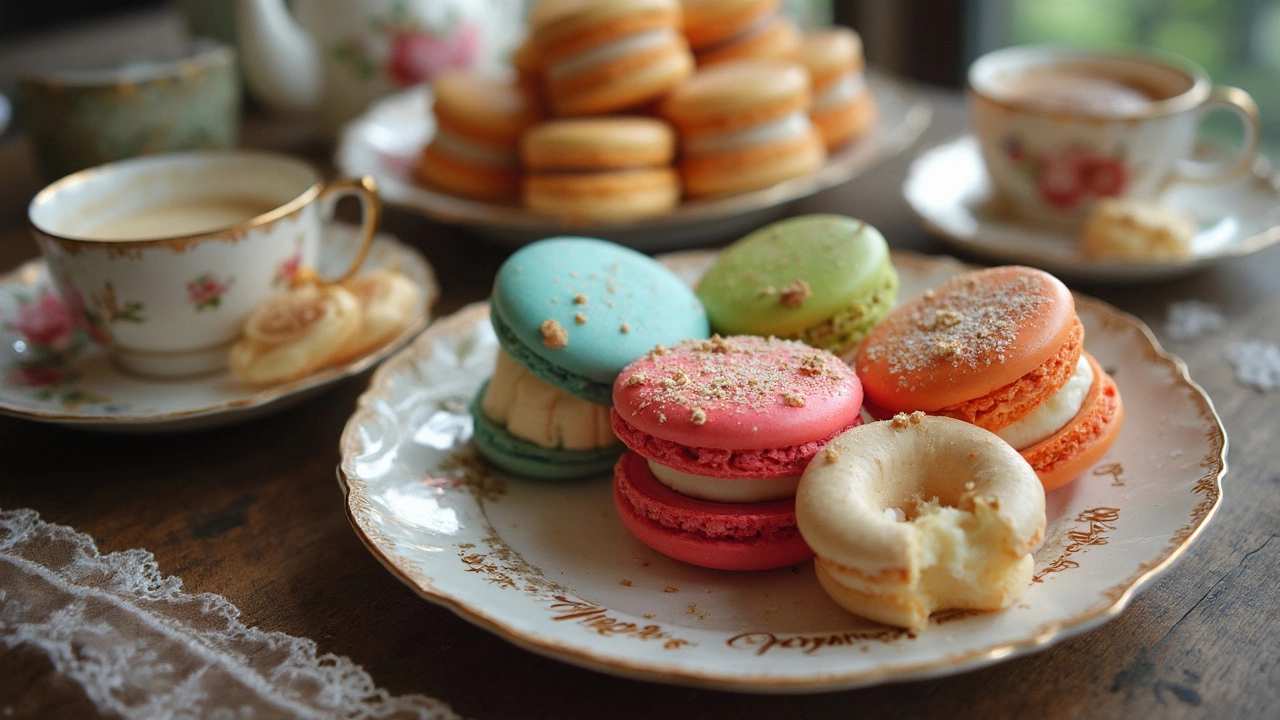
Describing the taste of a macaron is not as easy as just saying "sweet." There’s a lot packed into that tiny bite. First off, the outer shell gives a light crunch, but almost immediately melts away, turning into a chewy, slightly moist hug for your taste buds. The flavors aren’t just one-note sugar—good macarons balance sweetness with almond notes from the meringue, and the filling in the center brings a whole new layer.
What really sets a macaron apart is this mix of textures and flavors that burst together in seconds. Ever wondered why some people get obsessed? Half the fun is guessing which flavor you're about to bite into: maybe tangy raspberry, earthy pistachio, a punch of chocolate, or that odd lavender one your friend swears by. Each has its own vibe, all wrapped up in something that feels both delicate and rich at the same time.
- What Makes a Macaron Unique?
- The Flavors and Fillings Explained
- Texture: The Ultimate Dealbreaker
- Tips for First-Time Tasters
What Makes a Macaron Unique?
Macarons don’t just stand out because they're cute and pastel-colored. The magic really comes down to their recipe and how they’re made. Unlike your typical cookie, macarons use almond flour instead of regular wheat flour. That switch is what gives them their signature nutty undertone and makes them naturally gluten-free. The shell forms when whipped egg whites, called meringue, are folded into powdered sugar and almond flour. This mix is piped into circles, left to rest (so they form those little "feet" at the bottom), then baked to get that famous crisp-meets-chewy texture.
French pastry chefs take macaron making super seriously—that’s why it’s so hard to pull off at home. Humidity, oven temp, even how you fold the batter can mess them up. In Paris, there are actual competitions judging just how perfect (or not) a macaron shell is. People will actually talk about the exact millimeters of crack in the shell like it’s an Olympic event!
What really makes macarons unique, though, is the play between the shell and the filling. You're not just biting into a single flavor; each one is a sandwich that brings together two shells and something creamy in the center. That means you get double the texture, a combo of flavor bursts, and nothing gets soggy even if the filling is super rich. No other treat really nails this sweet, light, crunchy, chewy, and creamy mix all at once.
Another thing: macarons aren’t macarOOns. That’s a totally different coconut thing. I made that mix-up at least twice until Alaric brought home a legit macaron box for us to share. Changed my snack life for good.
The Flavors and Fillings Explained
People think macarons are just little almond cookies, but the real wow factor comes from their endless flavor combos. The shell itself mostly tastes like sweet almonds, thanks to the almond flour and egg whites. That’s classic, but things get really fun with the fillings—this is where real creativity kicks in.
Traditionally, macaron fillings are either a rich ganache (think chocolate or fruit purées blended with cream), a smooth buttercream, or fruit jams. The French take their time perfecting these centers, and for good reason. For example, a pistachio macaron usually gets a buttercream loaded with real pistachios, which makes the flavor pop without tasting fake. Salted caramel macarons use thick caramel that gives that hit of buttery saltiness.
Here’s a quick breakdown of the most common macaron flavors and what you’ll taste in each:
- Macaron in classic vanilla: light, creamy, not too sweet—Pairs with nearly any drink.
- Raspberry: tart and a bit floral; the jam in the middle brings out real fruit flavor, not just candy sweetness.
- Chocolate: rich ganache filling, slightly bitter from cocoa, but still balanced by the sweet shell.
- Lemon: zesty with a sharp kick; often filled with bright, real lemon curd.
- Coffee: sweet with a real roasted flavor, almost like a mini espresso shot.
Now, bakeries have gone wild with flavor options. Some push the limits—Thai tea, matcha, black sesame, birthday cake, even bacon. If you’re unsure where to start, stick with a few single-flavor macarons and see which one makes you want another round. And don’t forget: the color doesn’t always match the flavor. That neon pink shell? It might just be subtle rose, not strawberry.
If you’re making macarons at home, the filling is where you can really play. The shells stay pretty much the same recipe, but swap the filling and suddenly you’ve created something totally new. Keep in mind, though, that fruity or tangy flavors usually taste fresher and lighter, while nuts and chocolate feel richer and more decadent.

Texture: The Ultimate Dealbreaker
If you ask any pastry lover what makes or breaks a macaron, they’ll usually talk about the texture first. A perfect macaron isn’t just about taste—it’s about that mix of crispy and chewy you don’t find in most desserts. Bite into a macaron, and you should hear a tiny crack as your teeth break the outer shell. That shell is paper-thin, thanks to a process called "macaronage," where bakers fold almond flour into whipped meringue just enough—no more, no less. Get it wrong and the macaron can come out hollow, dry, or sludgy inside. None of those are good.
Inside, the cookie part should feel soft, a little chewy, but not sticky or overly moist. A lot of folks are surprised by how quickly the shell gives way to this cake-like bite. Then, the filling (usually ganache, buttercream, or fruit curd) adds a creamy finish. The combo is what makes macarons special: not a crunchy meringue, not a chewy cookie, but totally its own thing. If you’ve ever had a dense, rubbery, or crumbly macaron, you probably wouldn’t want seconds—trust me, I’ve dragged Alaric through enough bakeries to learn this the hard way.
Some bakeries get scientific about it. The French macaron authority Pierre Hermé says the balance should be about 70% cookie, 30% filling by weight. That might sound nerdy, but it’s true—too much cookie, and the sandwich is dry; too much filling, and it’s mushy. Here’s a quick breakdown of macaron texture qualities versus common baking issues:
| Texture Trait | What You Want | Red Flag |
|---|---|---|
| Shell | Crisp, thin, no stickiness | Too hard, sticky, or cracked badly |
| Inside | Soft, slightly chewy, moist | Dry, hollow, or gummy |
| Filling | Creamy, smooth, holds shape | Runny, grainy, or rock hard |
Macarons are finicky. Even humidity can mess things up, so pros in Paris sometimes measure kitchen moisture levels. If you're making them at home, let them "mature" in the fridge for 24 hours — this helps the shell and filling get cozy and makes the texture feel just right. And, yes, the texture really does matter. One bad batch, and you’ll wonder what the fuss is about. Nailed it, and you’ll never look at cookies the same way again.
Tips for First-Time Tasters
Nervous about trying your first macaron? You’re not alone. These sweet French treats look fancy, but honestly, they’re a lot less intimidating if you know a few tips that can make your first bite way more enjoyable.
Don’t just grab any macaron you see. Freshness matters a lot. Look for spots that make macarons in small batches. If you’re at a bakery, ask when they were made. As Dana Cree, a well-known pastry chef, puts it:
"A good macaron should have a smooth, crisp shell with a chewy inside, and never taste stale — freshness is everything."
When picking flavors, go for classics like pistachio, chocolate, or raspberry if you’re new to the game. These usually give you a true sense of what macarons are all about. Avoid those crazy flavors until you know what the standard ones taste like.
- Let the macaron sit at room temperature for a few minutes before eating if it’s been in the fridge. This helps the flavors bloom.
- Eat it in one or two bites—don’t nibble. You want to get both shells and the filling in one go. The magic is in that perfect mix.
- If you’re not sure about allergens, ask. Lots of macarons have almonds and sometimes other nuts.
Don’t compare macarons to regular cookies or meringues. The combo of crunchy shell and gooey inside is unique—it really deserves its own category. And hey, if you don’t fall in love at first bite, try another flavor. Some bakeries let you buy them one at a time, so mix it up before making your mind up.
Last thing—take your time. A macaron is best enjoyed slowly, letting the flavors and textures do their thing.


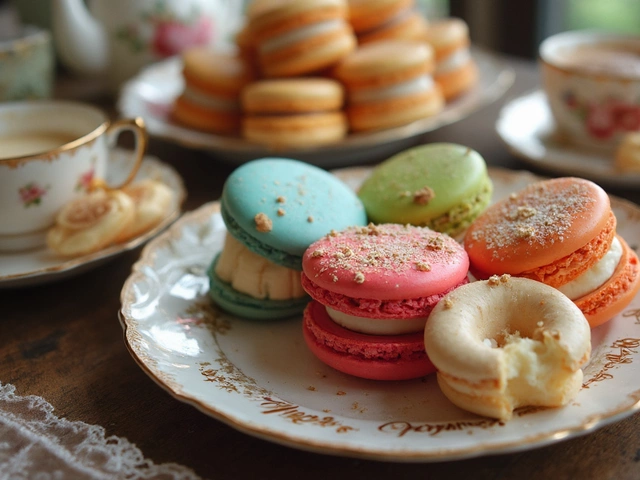
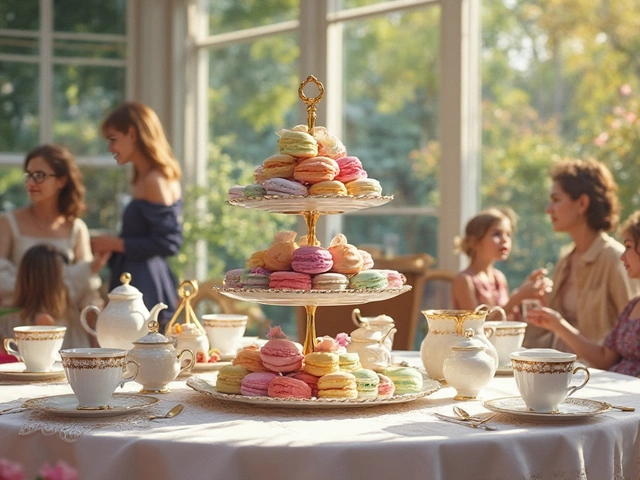
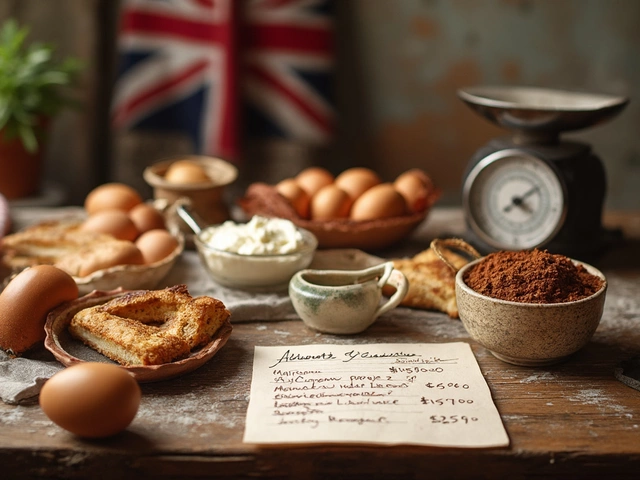
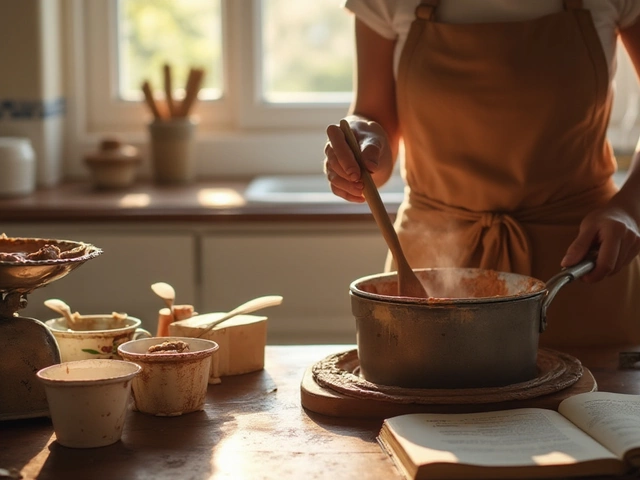

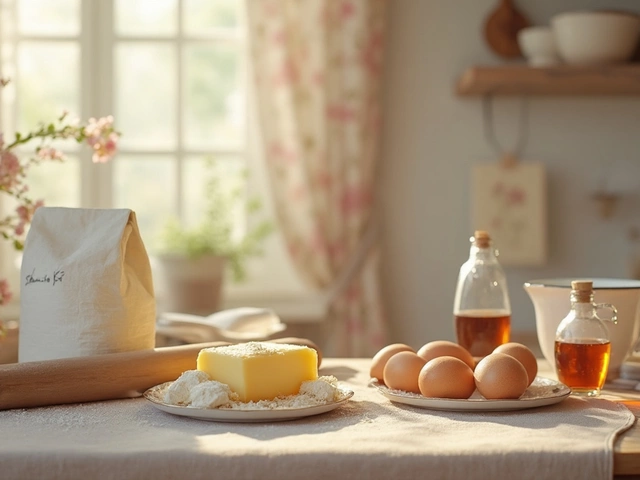

Write a comment